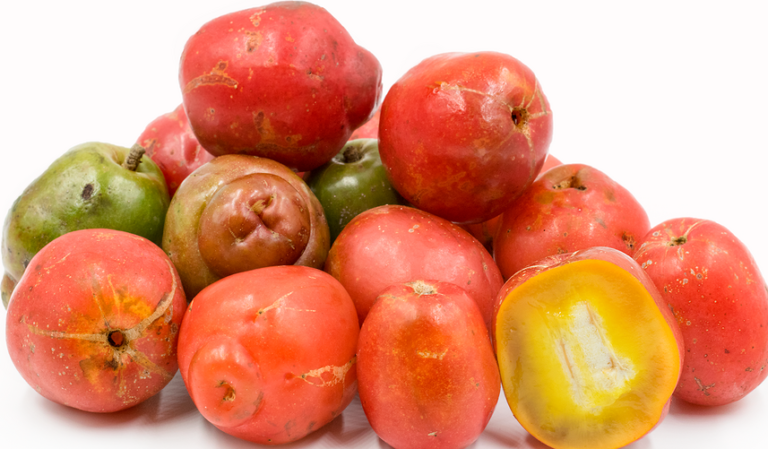Apple Cider vs. Apple Juice: What’s the Difference and Which is Better?
Welcome to the ultimate showdown between two beloved apple beverages Apple Cider vs. Apple Juice! Whether you’re sipping on a cozy fall day or craving a refreshing sip of fruity goodness, apples have got you covered. But what exactly sets these two drinks apart? And which one reigns supreme in terms of flavor and health benefits? We’re here to break it down for you, sip by sip.
In this blog post, we’ll delve into the world of homemade apple cider recipes that will make your taste buds dance with joy. From the sweetest apple varieties to the tangiest options, we’ll guide you through creating your very own batch of liquid gold. Plus, we’ll share some pro tips along the way to ensure your homemade cider is nothing short of perfection.
But first things first – let’s explore how to differentiate between apple cider and its close counterpart, apple juice. Get ready for a juicy (pun intended) comparison that will leave no stone unturned. So grab your favorite mug or glass because things are about to get deliciously interesting!
Homemade Apple Cider
There’s something undeniably magical about homemade apple cider. The aroma of simmering apples, cinnamon sticks, and spices fills the air, transporting you to a cozy autumn wonderland. And the best part? You have complete control over every ingredient that goes into your brew.
To start off on your journey to apple cider bliss, gather up some fresh apples (more on that later), spices like cinnamon and cloves, and a touch of sweetness if desired. Then it’s time to roll up your sleeves and get cooking! Simmer those delicious ingredients together until they meld into a rich, flavorful concoction that will warm both your hands and heart.
The beauty of homemade apple cider is that you can customize it to suit your taste buds perfectly. Whether you prefer a sweeter blend or crave an extra kick of spice, experimenting with different flavors is all part of the fun. So why settle for store-bought when you can create your very own batch of liquid gold in the comfort of your kitchen? It’s time to embrace the joyous artistry of homemade apple cider!
Ingredients
When it comes to making homemade apple cider, the ingredients you choose can make all the difference in flavor and freshness. Here’s what you’ll need:
Of course, you’ll need a variety of fresh apples. Look for ones that are firm and free from bruises or blemishes. Different types of apples can add different flavors to your cider, so feel free to mix and match!
Next, gather some warm spices like cinnamon sticks, cloves, and nutmeg. These aromatic additions will infuse your cider with cozy fall flavors.
To sweeten things up a bit, consider adding brown sugar or honey. This will give your cider a touch of sweetness without overpowering the natural taste of the apples.
And don’t forget about water! You’ll need enough to cover the apples while simmering them into deliciousness.
With just a few simple ingredients, you can create a delightful batch of homemade apple cider that will instantly transport you to autumn bliss! So grab those apples and get ready to embark on an enchanting culinary adventure!
Directions
To make homemade apple cider, follow these simple steps. First, gather your ingredients: fresh apples (a mix of sweet and tart varieties), water, cinnamon sticks, cloves, and brown sugar (optional).
Next, wash the apples thoroughly and chop them into quarters. Remove the cores but leave the peels intact as they add flavor to the cider. Place the chopped apples in a large pot along with enough water to cover them completely.
Bring the mixture to a boil over medium heat and then reduce it to low. Allow it to simmer for about an hour until the apples have softened and released their juices. Stir occasionally during this process.
Once done, remove from heat and let it cool slightly before straining out all solids using a fine-mesh sieve or cheesecloth. Press down on the solids to extract as much juice as possible.
Pour the strained liquid back into your pot and return it to low heat. Add cinnamon sticks, cloves, and brown sugar if desired for added flavor. Let it simmer gently for another 30 minutes while stirring occasionally.
Fall Favorites
As the leaves start to change colors and a crispness fills the air, it’s time to embrace all things fall. From cozy sweaters to pumpkin spice lattes, there’s something magical about this season. And when it comes to fall favorites, apple cider always takes center stage.
There’s nothing quite like sipping on a warm mug of apple cider as you watch the leaves fall outside your window. The sweet aroma of apples and spices fills your home, creating a comforting atmosphere that is hard to resist. Whether enjoyed on its own or paired with a slice of freshly baked apple pie, apple cider is the perfect companion for those cool autumn days.
So grab your favorite blanket, find a spot by the fire, and indulge in one of fall’s most beloved treats – homemade apple cider. It’s not just a beverage; it’s an experience that captures the essence of this beautiful season.
Apple Cider Recipe
When it comes to fall beverages, nothing beats a warm and comforting glass of apple cider. The sweet and tangy flavors of fresh apples combined with aromatic spices create a delightful drink that is perfect for chilly autumn days. Making your own apple cider at home is easier than you might think, and the results are truly delicious.
To start, you’ll need a mix of sweet and tart apple varieties to achieve the perfect balance of flavors. Sweet apples like Honeycrisp or Fuji add natural sweetness, while tart varieties such as Granny Smith or Jonathan provide a pleasant acidity. Combine these apples with cinnamon sticks, cloves, allspice berries, and a touch of brown sugar for added depth.
Next, simply simmer the mixture on low heat until the apples soften and release their juices. Mash them gently with a potato masher to extract even more flavor. Once cooked down, strain the liquid through a fine-mesh sieve or cheesecloth to remove any solids. Serve hot in mugs garnished with cinnamon sticks for an extra festive touch.
Homemade apple cider is not only incredibly tasty but also allows you to control exactly what goes into your drink. Plus, it fills your home with irresistible aromas that will make everyone excited for fall festivities! So grab some fresh apples from your local orchard and give this easy recipe a try – trust me; once you’ve tasted homemade apple cider, you’ll never want store-bought again!
Sweet apple varieties
When it comes to making homemade apple cider, the type of apples you choose can make all the difference in flavor and sweetness. There are several sweet apple varieties that work perfectly for creating a deliciously sweet and refreshing cider.
One popular choice is the Honeycrisp apple, known for its crisp texture and balanced sweetness. Its natural juiciness lends itself well to cider making. Another tasty option is the Gala apple, which has a mild sweetness paired with a hint of tartness. This combination creates a well-rounded flavor profile in your cider.
For those who prefer an even sweeter taste, the Fuji apple is an excellent choice. With its naturally high sugar content, this variety adds a delightful sweetness to your homemade cider. Whichever sweet apple variety you choose, rest assured that your homemade cider will be bursting with delicious flavors!
Tart apple varieties
Tart apple varieties add a punch of flavor to homemade apple cider. These apples are known for their sharp, tangy taste that balances out the sweetness in the cider. Some popular tart apple varieties include Granny Smith, Jonathan, and Baldwin.
Granny Smith apples have a bright green skin and a crisp texture. They bring a refreshing tartness to the cider, making it lively and invigorating. Jonathan apples have a red-green skin with white flesh. Their balanced sweet-tart flavor adds complexity to the cider. Baldwin apples have a deep red color and offer a robust tartness that gives the cider depth and character.
When using tart apple varieties in your homemade apple cider recipe, you can expect an explosion of flavors that will tantalize your taste buds from start to finish!
Ingredients
When it comes to making homemade apple cider, the ingredients you choose play a crucial role in determining its flavor and quality. The key ingredient is, of course, fresh apples. But not just any apples will do! You’ll want to select a variety that strikes the perfect balance between sweetness and tartness.
Choose sweet apple varieties like Honeycrisp or Gala for a cider that leans towards a milder taste. These apples have natural sugars that add a pleasant sweetness to your drink. On the other hand, if you prefer a more tangy and robust flavor profile, opt for tart apple varieties such as Granny Smith or Jonathan. These apples bring an extra zing to your cider with their acidity.
To enhance the depth of flavors in your homemade apple cider, consider adding additional spices like cinnamon sticks, cloves, or nutmeg. These aromatic ingredients infuse warmth and complexity into every sip. And don’t forget about sugar! While some people prefer unsweetened cider, others enjoy a touch of sweetness by adding sugar or honey during the cooking process.
By carefully selecting your ingredients and experimenting with different combinations, you can create a unique and delicious homemade apple cider that truly captures the essence of fall. Get ready to savor this seasonal delight from start to finish!
Instructions
To make homemade apple cider, follow these simple steps. First, gather your ingredients, which include fresh apples, cinnamon sticks, cloves, and sugar (optional). Next, wash and chop the apples into small pieces. Place them in a large pot along with the spices and cover with water. Bring the mixture to a boil and then reduce the heat to simmer for about an hour. Mash the softened apples with a potato masher or spoon to release their juices. Strain the mixture through a fine-mesh sieve or cheesecloth to remove any solids. Serve hot or chilled for a refreshing fall beverage.
Nutrition Per Serving
When it comes to enjoying a refreshing glass of apple cider, you might be wondering about its nutritional value. Let’s take a closer look at the nutrition per serving of this delightful beverage.
Apple cider is relatively low in calories, making it a guilt-free choice for those watching their waistlines. A typical serving of apple cider contains around 120-150 calories. Additionally, it is fat-free and cholesterol-free, which adds to its appeal as a healthy option.
Moreover, apple cider packs a punch when it comes to vitamin C content. With each serving providing up to 10% of your recommended daily intake, sipping on this delicious drink can help boost your immune system and keep colds at bay. It also contains small amounts of potassium and fiber, contributing to overall health benefits.
Apple cider is not only flavorful but also offers some nutritional perks like being low in calories and rich in vitamin C. So go ahead and enjoy this autumn favorite without any guilt!
How to Make Apple Cider
Making apple cider at home is a fun and rewarding autumn activity that will fill your kitchen with the delicious aroma of apples. To make your own apple cider, start by gathering fresh, juicy apples. Look for varieties that are both sweet and tart for a balanced flavor. Wash and chop the apples, leaving the skins on for added flavor.
Next, place the chopped apples in a large pot and add enough water to cover them completely. Simmer the mixture over low heat until the apples become soft and mushy. Mash them with a potato masher or blend them with an immersion blender to release all their juices.
Once you have mashed or blended the softened apples, strain the mixture through cheesecloth or a fine-mesh sieve to remove any solid pieces. Squeeze out as much liquid as possible from the pulp before discarding it.
The resulting liquid is your homemade apple cider! You can enjoy it warm right away or refrigerate it to serve chilled later on. It’s perfect for sipping during cozy evenings by a fire or adding a touch of fall flavor to your favorite recipes like mulled cider or apple-infused cocktails.
So why not give homemade apple cider a try this season? It’s easy to make, customizable to suit your taste preferences, and will impress friends and family alike with its fresh-from-the-orchard flavors!
Ingredients
When it comes to making homemade apple cider, the ingredients are key. You’ll need a combination of sweet and tart apple varieties to achieve that perfect balance of flavors. Opt for apples like Honeycrisp, Gala, or Fuji for their natural sweetness. These apples provide the base of your cider and give it that deliciously fruity taste. On the other hand, don’t forget about adding some tartness to your cider by including apples like Granny Smith or McIntosh in the mix.
But it’s not just about the apples! To enhance the flavor profile even further, you’ll also need spices such as cinnamon sticks, cloves, and nutmeg. These warming spices add depth and complexity to your cider recipe. Don’t be afraid to experiment with different spice combinations until you find your favorite blend. And if you’re feeling adventurous, consider adding a hint of citrus zest or even a splash of vanilla extract for an extra twist!
Directions
To make homemade apple cider, you’ll need to follow a few simple directions. First, gather your ingredients: fresh apples (preferably a mix of sweet and tart varieties), cinnamon sticks, cloves, and sugar (optional). Begin by washing the apples thoroughly and removing any stems or blemishes.
Next, chop the apples into small pieces or use an apple corer to remove the cores. Place the chopped or cored apples in a large pot along with enough water to cover them completely. Add in a couple of cinnamon sticks and several cloves for added flavor.
Bring the mixture to a boil over medium heat, then reduce the heat and let it simmer for about an hour until the apples are soft. Use a potato masher or immersion blender to mash up the cooked apples until they form a pulp-like consistency.
Once mashed, strain the mixture through cheesecloth or a fine-mesh sieve into another pot or container. Press down on the solids with a spoon to extract as much liquid as possible. If desired, stir in some sugar while it’s still warm for added sweetness.
And there you have it – delicious homemade Apple Cider vs. Apple Juice ready to be enjoyed! Serve it warm on chilly autumn days or refrigerate it for later enjoyment. It’s perfect on its own but can also be spiced up further with additional spices like nutmeg or orange zest if desired. Get creative and experiment with different flavors!
The Best Apples to Use for Cider
When it comes to making apple cider, choosing the right apples is key. The best apples for cider are those that strike the perfect balance between sweetness and tartness.
Sweet apple varieties like Honeycrisp, Gala, or Fuji add a delightful natural sweetness to the cider. These apples are juicy and have a mellow flavor that complements the other ingredients in the recipe. On the other hand, tart apple varieties such as Granny Smith or Jonathan provide a tangy punch that enhances the overall taste of the cider.
By combining sweet and tart apple varieties in your cider recipe, you can achieve a well-rounded flavor profile that will leave your taste buds craving more. Experiment with different combinations of apples to find your preferred blend for homemade apple cider!
Pro Tips for Making Apple Cider
When it comes to making apple cider, there are a few pro tips that can take your homemade brew to the next level. First and foremost, choose a variety of apples that are known for their flavor and juiciness. The type of apple you use will greatly impact the taste of your cider.
Another important tip is to balance the sweetness and tartness of your apples. By using a combination of sweet and tart apple varieties, you can create a well-rounded flavor profile in your cider.
In addition, consider adding spices like cinnamon, cloves, or nutmeg to enhance the aroma and taste of your cider. These warm spices complement the natural flavors of the apples beautifully.
Don’t forget about temperature control during fermentation. Keeping an eye on the temperature ensures optimal yeast activity and helps prevent off-flavors in your final product.
Storage Tips
When it comes to storing apple cider, there are a few key tips to keep in mind. First and foremost, make sure you store your cider in the refrigerator. This will help maintain its freshness and prevent any potential spoilage. Additionally, be sure to keep your apple cider tightly sealed in an airtight container or bottle. This will help preserve the flavor and prevent any unwanted odors from seeping into the cider.
Another important storage tip is to avoid exposing your apple cider to direct sunlight or extreme temperatures. Heat can accelerate fermentation, while sunlight can cause the flavors of the cider to degrade over time. So, find a cool spot in your fridge where you can safely store your delicious homemade apple cider.
Common Questions about Apple Cider
- Is apple cider the same as apple juice?
Many people wonder if there is a difference between Apple Cider vs. Apple Juice. While both beverages are made from apples, the main distinction lies in how they are processed. Apple cider is typically unfiltered and may contain sediment or pulp, giving it a more rustic and flavorful taste. On the other hand, apple juice is usually filtered to remove any solids, resulting in a smoother and clearer liquid.
2. Can I make my own apple cider at home?
Absolutely! Making your own homemade apple cider can be a fun and rewarding activity. All you need are fresh apples, water, sugar (if desired), spices like cinnamon or cloves (optional), and some patience for the brewing process. By following simple instructions such as simmering chopped apples with water until soft, straining out the solids, then letting it cool before serving chilled or warm – voila! You have your very own delicious homemade apple cider ready to enjoy.
Variations of Apple Cider
Apple cider is a versatile beverage that can be enjoyed in many different ways. From traditional recipes to creative twists, there are plenty of variations to suit everyone’s taste buds.
One popular variation is spiced apple cider, which adds warm and aromatic spices like cinnamon, nutmeg, and cloves to enhance the flavor. This cozy concoction is perfect for chilly autumn evenings or holiday gatherings. Another twist on apple cider is adding a splash of citrus juice, such as orange or lemon, for a refreshing and tangy twist. The zesty notes provide a burst of brightness to balance out the natural sweetness of the apples.
Whether you prefer your apple cider hot or cold, with added spices or fruits, there are endless possibilities when it comes to experimenting with flavors. Get creative in the kitchen and try infusing your apple cider with herbs like rosemary or mint for an herbal infusion. Or why not add some cranberry juice for a festive touch during the holidays? The options are only limited by your imagination!
Cultural Significance of Apple Cider
Apple cider holds a special place in many cultures around the world. From traditional American fall festivals to European harvest celebrations, apple cider plays a central role in seasonal festivities.
In the United States, apple cider is often associated with autumn and Halloween. It’s a beloved beverage that brings families together during hayrides and pumpkin patch visits. In Europe, especially in countries like Germany and England, apple cider is deeply rooted in tradition. It has been enjoyed for centuries as part of Oktoberfest celebrations and even used as an offering during religious ceremonies.
The rich history and cultural significance of apple cider make it more than just another tasty drink. It symbolizes warmth, community, and the joy of harvest season. So whether you’re sipping on a glass at a local fall fair or enjoying homemade apple cider with loved ones, take a moment to appreciate the cultural heritage behind this delightful beverage!
Comparison of Apple Cider vs. Apple Juice
When it comes to apples, there are two popular options for enjoying their delicious flavorsApple Cider vs. Apple Juice. While they may seem similar at first glance, there are actually some key differences between the two.
Apple cider is made from fresh apples that have been crushed and then pressed to extract the juice. This juice is typically unfiltered, which gives it a cloudy appearance and a slightly tart taste. On the other hand, apple juice is usually filtered to remove any pulp or sediment, resulting in a clear liquid with a sweeter flavor.
So what’s better? Well, that really depends on personal preference. Some people enjoy the rich and complex flavors of apple cider, while others prefer the smooth sweetness of apple juice. Both can be enjoyed on their own or used as ingredients in various recipes like cocktails or marinades.
Conclusion
In this article, we’ve explored the wonderful world of apple cider and apple juice. From homemade recipes to the best apples to use and storage tips, we’ve covered it all! Whether you prefer the rich flavors of apple cider or the refreshing taste of apple juice, there’s no denying that both have their own unique qualities.
Apple cider is a beloved fall favorite, with its warm spices and comforting aroma. It can be enjoyed hot or cold and is perfect for sipping by a cozy fireplace on a chilly evening. On the other hand, apple juice is crisp and refreshing, making it an ideal choice for quenching your thirst on a hot summer day.
When it comes to nutritional value, both beverages offer health benefits. Apple cider contains more fiber than apple juice since it retains the pulp from the apples during processing. This makes it a good choice for those looking to increase their fiber intake. However, if you’re watching your sugar intake or prefer a lighter option, apple juice may be more suitable as it often has less natural sugars.







